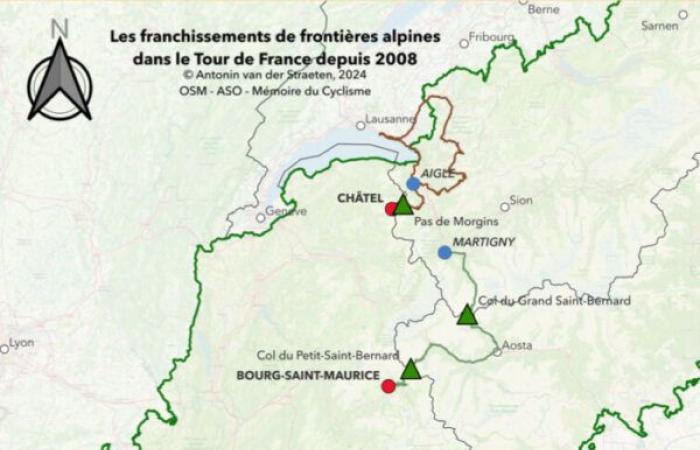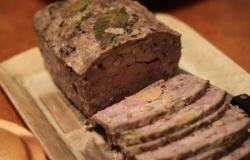The Tour de France often writes its epilogue in the Alps, where the stages regularly cross the borders with Switzerland and Italy. Recent examples allow us to understand what these Alpine stages say about mountain mobility and crossing borders.
Antonin van der Straeten is a doctoral student in geography at the EDYTEM laboratory at the University of Savoie Mont Blanc (UMR 5204). A sports specialist and passionate about Central Europe, he is carrying out a thesis on the Tour de France: the questions of public reception policies, adaptation of the layout of the sites and the perceptions of the general public are the main themes of his research work.
Good news! There Compass room is complete for talking about cycling and the Alps. Obviously, many fans of the little queen and curious people have joined the community of geographers.
The opportunity to remember that geography and geographers are not above ground by being interested in an event as popular as the Tour. Many people will have acquired – outside the walls of school and during the summer holidays – a real geographical knowledge of their country!
A card adapted to the needs of a sporting event
If we think first of the length, variety and difficulty of the stages, logic inherent to sporting competition, the route of the Tour must adapt to other constraints, in fact more determining, of as much as the Tour remains over the years the largest cycling event followed – and scrutinized – internationally.
The road is primarily designed for cars and heavy goods vehicles, with “four-wheelers” being the main prescribers in terms of mobility and therefore infrastructure. Nothing bothersome a priori for the “two-wheelers”, the bitumen not being to displease them, provided that we protect the course during the tests. And then the Tour caravan can follow. In fact, our speaker will show us further that it is not that simple…
A 2024 Tour de France like no other?
For the first time in its history, the departure of the large loop was given from Italy. In addition to this novelty, the finish of the last stage will not be judged on the Champs-Élysées as has been customary since 1975, but relocated to the Promenade des Anglais in Nice, due to the organization of the Olympic Games in the capital.
In fact, great continuity
The 2024 map therefore shows a neglected North. In fact, nothing scandalous or exceptional: the Tour route is not intended to cover all French regions and with the help of suspense, the mountain stages remain the holy grail to achieve. But this is not systematic: Brittany is very well represented, while the Center is poorly represented. Because the variety of routes is of interest and the demand for Tours for cities is strong. A visit to the Tour is a plus for the reputation of the place, in a country where tourism is a major industry. Moreover, the Tour stopping at Colombey-les-deux-Eglises shows that it does not disdain heritage tourism either.
An international Tour de France on its route
The 2024 Tour crosses 2 borders, starting for the first time in Italy (departure from Florence) and ending with its 20th stage from Monaco to the Promenade des Anglais.
This desire to give an international aspect is not an exception, far from it. Our neighbors, from Britain to Spain, welcomed him. The 2022 edition even starts from Copenhagen, to be won by Danish runner Jonas Vingegaard. And among the countries that have hosted the Tour the most, it is Switzerland, our Alpine neighbor, which takes the prize. Because stages have taken place regularly on both sides of the inter-Alpine borders since the 90s.
The Alps – French, but not only – are therefore the essential space for stages which keep the cycling country in suspense every year.
The Alps, beloved region of the Tour
Each year, the FIG offers a guest theme/country (or space) “combo”. The opportunity for a few conferences to combine the two. This is the case of this conference, resulting from the work of Antonin Van des Straeten on the cycling Tour de France.

From 2008, the Tour organization promotes more variety, most often at altitude, via new or rarely used passes, such as the Col de la Lombarde (map above).
A second round, imposed by the logistics of the event
Indeed, the logistics of the teams and sponsors require a different “non-race tour”: parking area, hotels to sleep runners and staff, roads allowing the passage of trucks, requiring alternate routes, or even surprising borrowings , not intended for traditional traffic. Antonin thus presents us with the example of the Nuant de Drance construction site tunnel, allowing an exceptional off-course route under the Emosson dams, in the Swiss Valais.
Conclusion
In fact, the Alpins have always known that their massif is passable, and they continue to create intense traffic there, unlike those who from the outside see it primarily as a formidable natural barrier. It will be recalled that Alpine geography has always made the link between the wealth of Alpine regions and the quality of their infrastructure. No wonder the Tour enjoys it so much: in these mountains the grandiose spectacle of nature and the extreme sporting performance of Man play out.
To conclude, our doctoral student, not sparing with humorous anecdotes in his oral interventions, does not hesitate to take on the costume of the “fat”, cycling worker content to pedal in the valleys and looking down from below at the “light” , lords of the passes and heroes of the people of the little queen… But knowing the protests in the room, I suppose that this is not the case and that Antonin handles the bike as well as the map…







